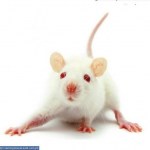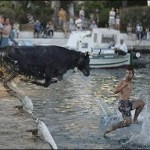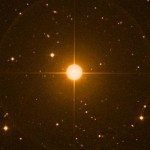brown
Shivering is one mechanism by which heat is produced in the body. Heat production is called thermogenesis. Another mechanism is through nonshivering thermogenesis regulated by brown fat (i.e. adipose). This second type of heating mechanism kicks in when we need extra heat production such as a postnatal infant, someone developing a fever, an animal arousing from hibernation, eating, or in the case of the current study, stress.
A recent study published in the American Journal of Physiology provides evidence that during stressful events brown adipose tissue can elevate body temperature through…
Ah, tis the electoral season, so it is no-holds-barred on the Tories.
Thanks to Paul and Ow.ly.
Original by Michael Schofield. I've cropped mine a little.
Meanwhile, it looks like Brown is in trouble. Mind you, I've no idea if the original comment was justified ot not.
Remember: Vote Green.
Well, not really. Artist Carel Brest van Kempen timelapsed stills of an acrylic painting to show his work process. It's remarkable how quickly the anole comes to life!
I especially enjoy watching the glazes go on and come off - each time he blots out part of the painting, I think, "oh NO!" But that's because I work in watercolor, which is pretty near irreversible. Acrylic is much more forgiving.
Clearly, neither the man nor the bull below is headed for anything good in their attempt to walk on water,
and for that matter, neither is this poor, bristling cat,
but what about this reptile?
Unbelievably, this lizard actually can walk on water! And without using any surface tension tricks like insects do, either. No, whereas a human puts his foot into the water and sinks, this lizard has a very low mass and a very large surface area on his feet, allowing him to "run" on water as long as he moves quickly enough. For this lizard, that's about 10 miles-per-hour. As opposed to a human, who…
Ahh, stars. Giant furnaces of nuclear fusion. Doing the stuff our Sun does, burning hydrogen fuel into helium (among other things) and emitting lots of visible light and energy in the process.
But when we take a look at brown dwarfs, they aren't like normal (i.e., main sequence) stars like our Sun. Instead of burning hydrogen into helium for their fuel, brown dwarfs don't generate enough pressure to make that happen; they can only burn hydrogen into deuterium.
Let's go over what the differences here are. A hydrogen nucleus is just a proton, with a mass of 938.272 MeV/c2. (I use these units…


